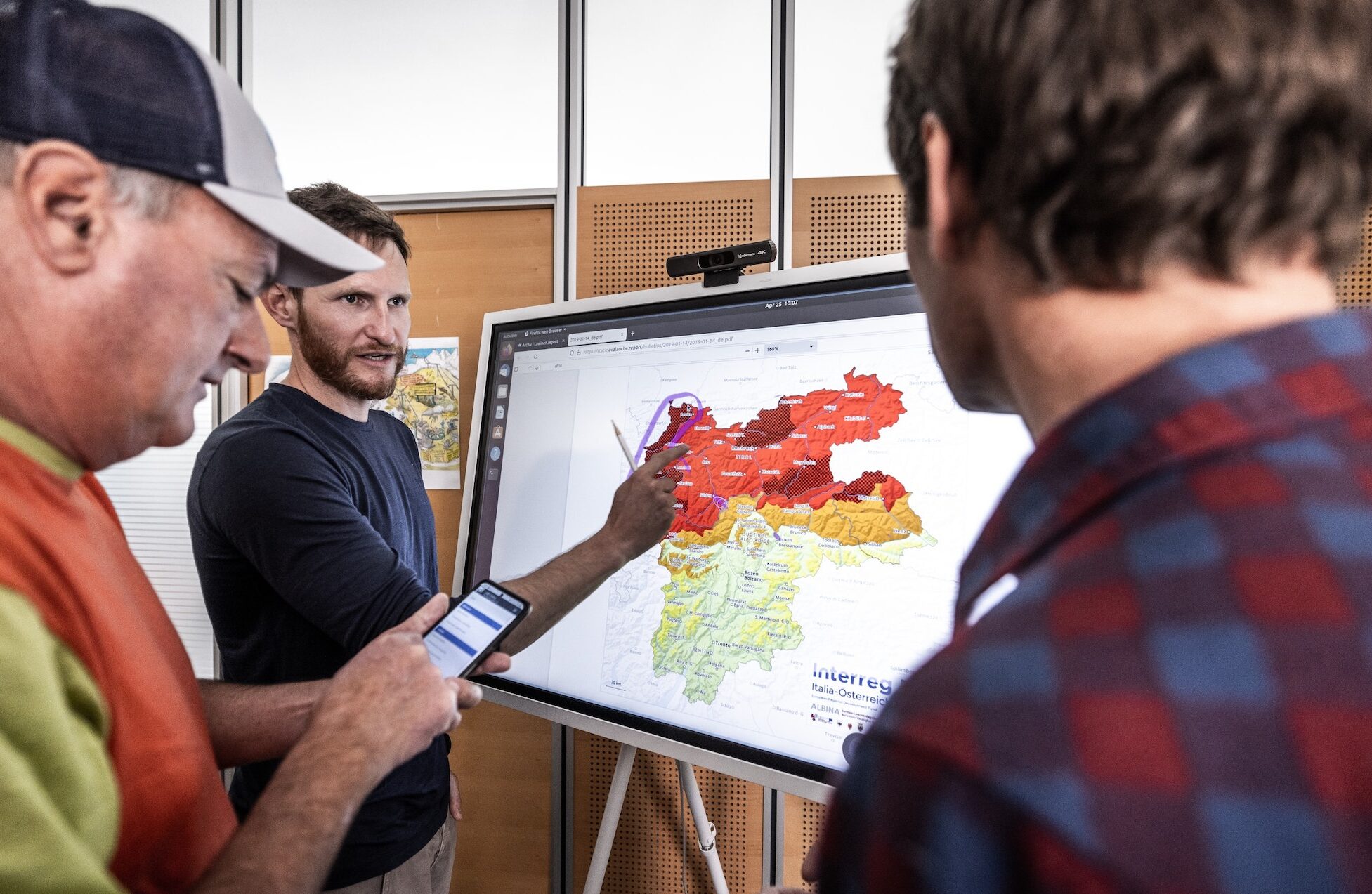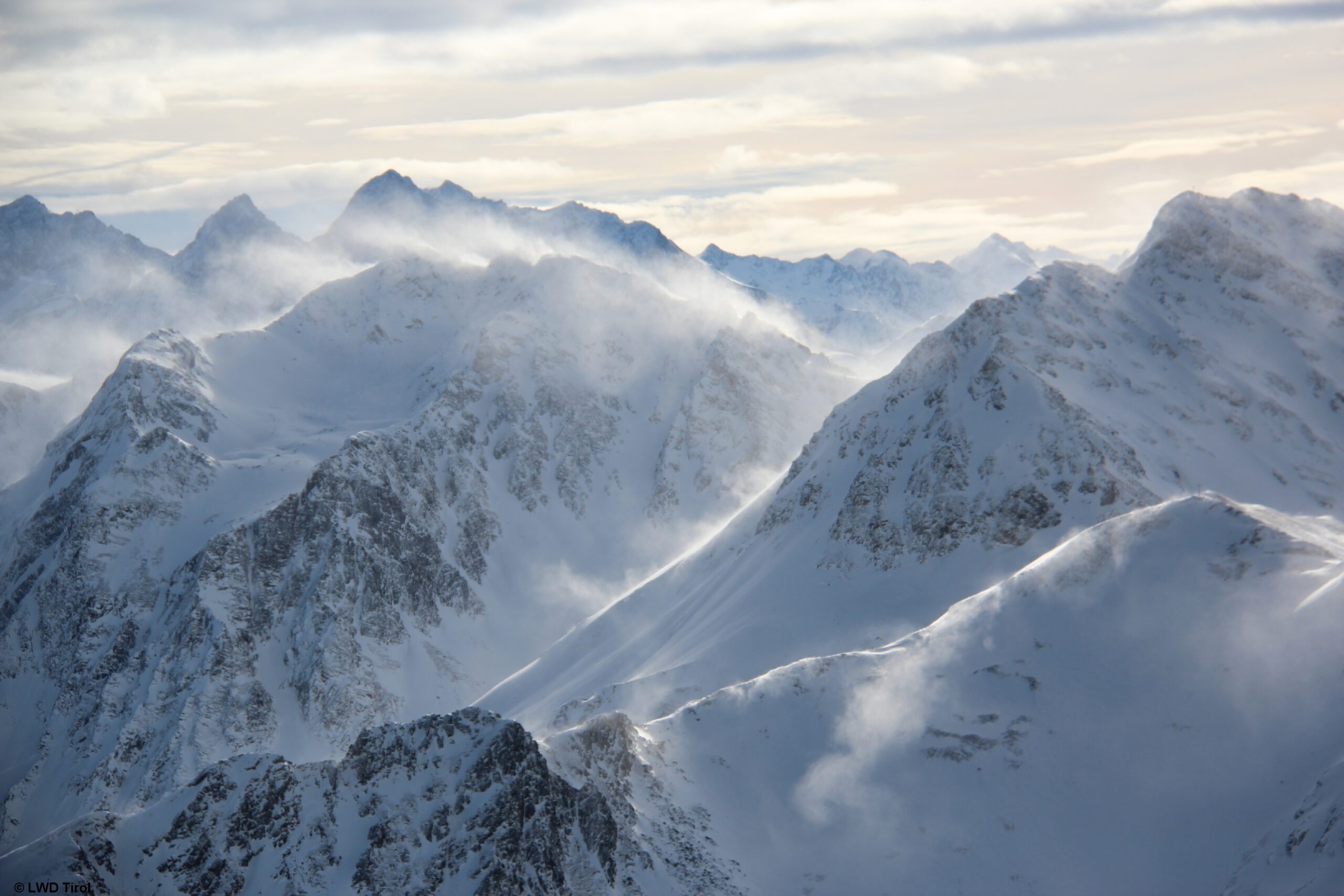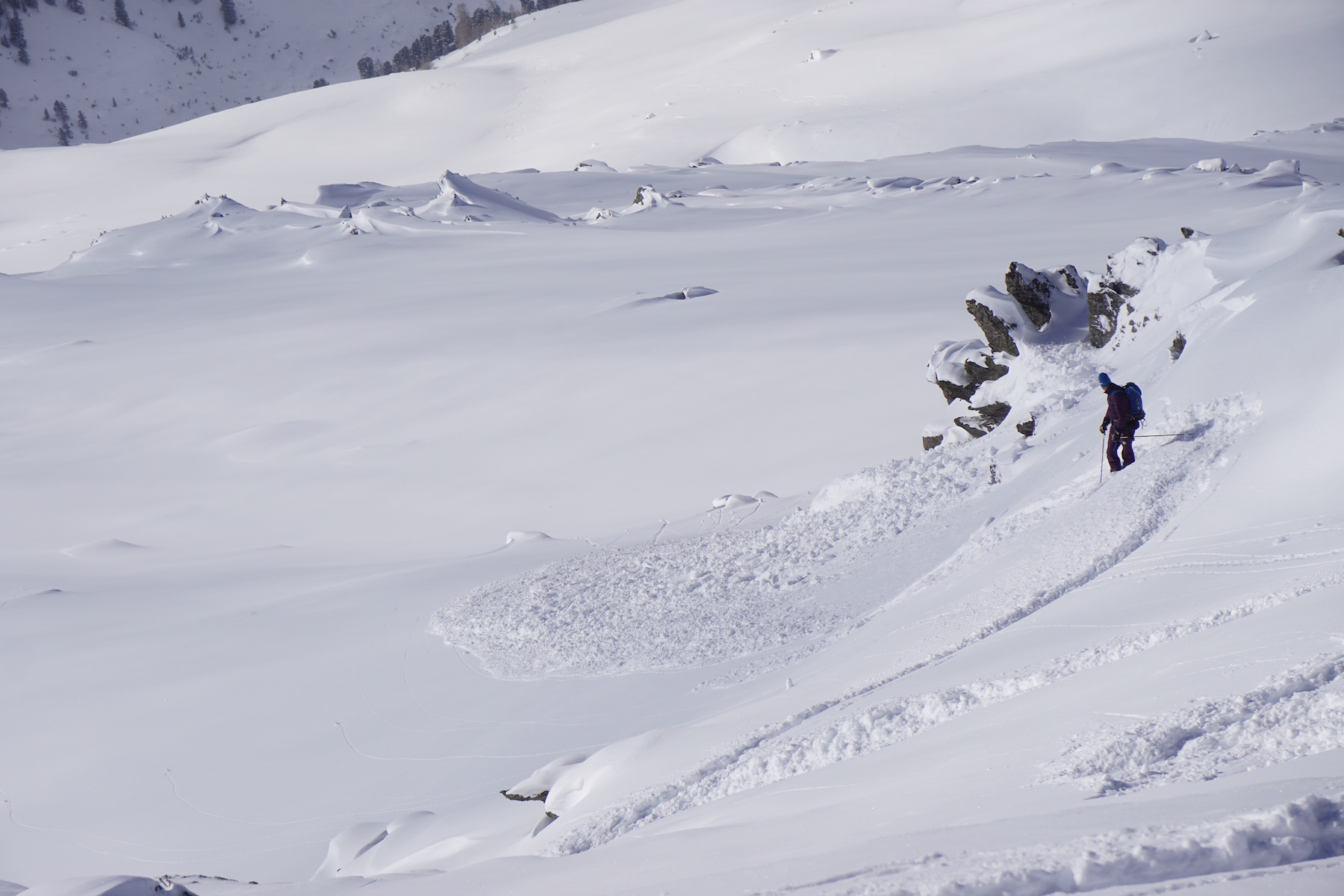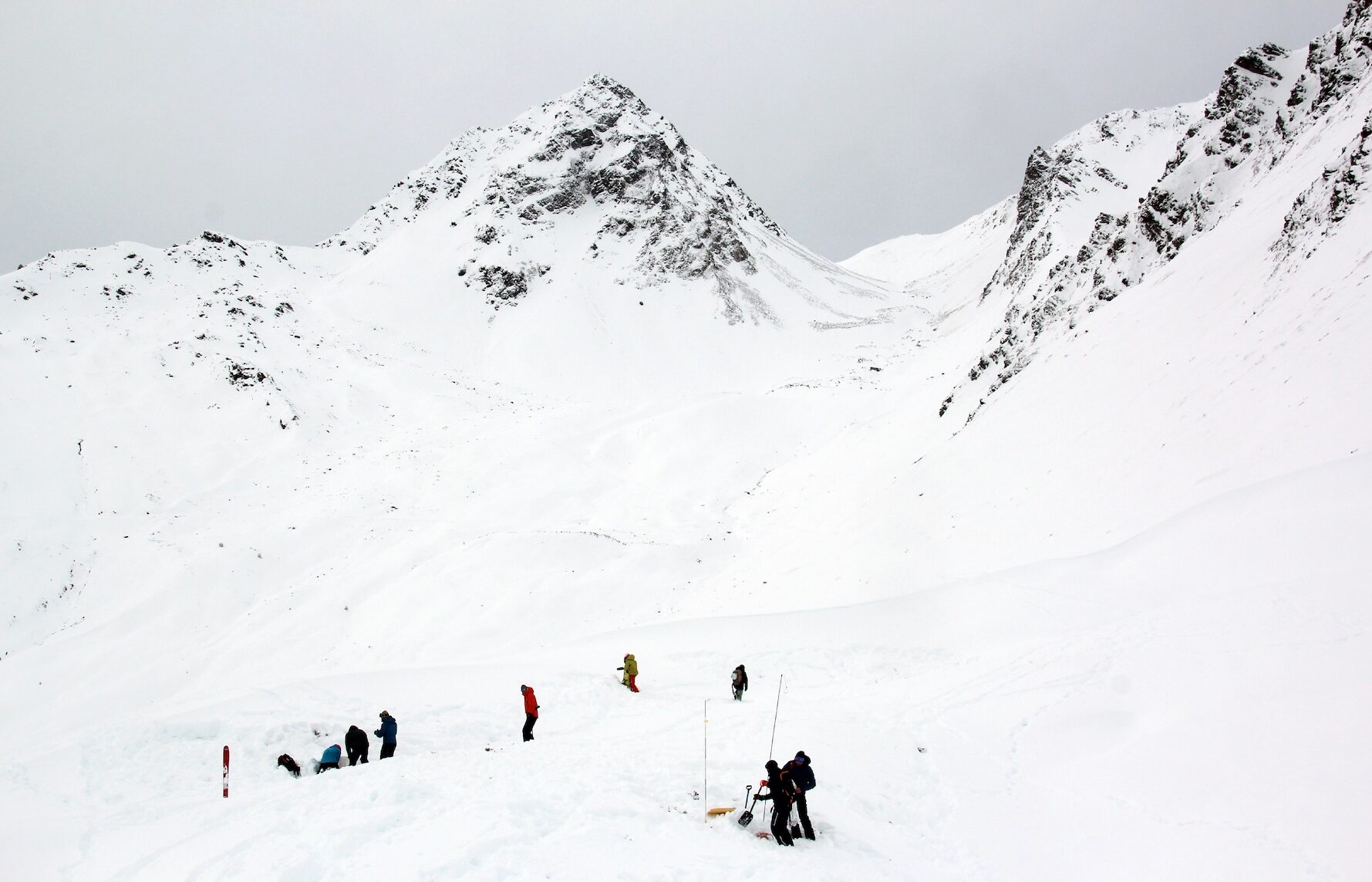
Do I need a new avalanche transceiver?
“Do you think I need a new avalanche transceiver?” is a question often asked by freeriders and course participants. Those who ask this question usually know themselves that the answer
16.07.2025
Helicopters are often the means of rescue of choice in the Alpine region – if they are available and the external conditions (weather conditions, daylight, etc.) permit their use. The following is a general overview of how to behave during a helicopter mission, with the most important credo being: “Be visible and accessible!”
If you find yourself in an alpine emergency situation or a group member is injured, you make an emergency call. The control center decides whether to send a helicopter or another rescue vehicle (snowmobile, rescue car, terrestrial rescue). A realistic description of the emergency situation is a prerequisite for this.
The exact location of the accident is particularly important for the call taker at the control center, but if a helicopter is required, this information is even more relevant. “From the air”, the terrain and the situation are different and it must be possible to specify the location as precisely as possible. In this context, the various national and regional emergency call apps that transmit the exact position data (coordinates and altitude) to the control center after activating the emergency call button are highly recommended. If you do not have such an app, you should be able to describe your location as well as possible (e.g.: ski resort XX, ski route YY, just below the ZZ hut, etc.) and specify the altitude. There are already apps installed on every smartphone (compass, etc.) that display the altitude – and usually also the location via coordinates – as well as numerous others that provide the same information (e.g. tour planning, map, avalanche apps, etc.).
The call taker also gives the caller instructions on what to do next. Above all, the control center will instruct him/her to remain reachable by telephone! This is the only way the helicopter crew or the control center can inform the caller in the event of uncertainties, e.g. regarding the accident location or changes to plans (arrival takes longer, a flight is not possible due to the weather situation, etc.).
This means that the calling person’s cell phone must remain switched on, they must also hear when a call comes in and the line must be kept free for such a callback. However, because the cell phone battery quickly loses power in winter due to low temperatures and the ringing can easily be overheard when wearing a helmet and in windy conditions, it is advisable to use the cell phone with a small headset (or to connect it to the headphones/microphone of the helmet). This way, the phone can be kept “warm” and protected in your jacket pocket, you won’t miss a call and your hands will be free to follow the call taker’s first aid instructions.
Note: If you are in an area where the cell phone does not have its own network but only a third-party network, the display will show the message “Only emergency call possible” or similar. In such cases, the emergency call is automatically made via 112, but the person calling cannot be called back! To provide updates or make enquiries, you must therefore dial 112 again.

Once the emergency call has been made, use the time to prepare for the arrival of the helicopter.
The injured person is positioned and treated as best as possible. All those involved/present prepare for the landing of the helicopter, with one person taking command (in the slope area this will usually be a professional slope rescuer) and ensuring that …
It is particularly important that there are no loose objects lying around when the helicopter is about to land, as these could be picked up when the helicopter lands and thus pose a danger, and that everyone stays where they are when the helicopter approaches. The pilot will try to land the emergency doctor as close as possible to the casualty, i.e. possibly directly (1 m) next to them. So even if it gets extremely loud and windy, keep calm. Under no circumstances should you panic and run away, as you could come into contact with the rotor in a worst-case scenario.
If you hear the helicopter approaching, make sure you draw attention to yourself! From an aerial perspective, we look very small and are often difficult to recognize. It helps the helicopter crew if you
If you are spotted by the helicopter crew, the pilot will take a look at the situation from above and decide whether to land or to take off again and look for an intermediate landing site in order to attach the medical crew to the rope and drop them off at the accident site via the rope after a few minutes. So don’t worry if the helicopter takes off again for a short time.
If a crew is looking for the “right” accident location in an area where several people/groups are on the move, it is extremely helpful if all those who do not need help signal this with the No sign. So please do not wave or behave passively, but signal a clear N with your arms.
The pilot can only fly “by sight” and is therefore dependent on a guide in wintry terrain. This person serves as a visual reference point to the surroundings in the event of diffuse visibility, snowfall or snow whirled up by the downwash when landing. If the wind is blowing, the guide positions themselves so that their broad ridge is facing the wind and the helicopter can land against the wind direction.
This guide is therefore an important reference point and must not leave their position. If the helicopter comes closer and closer during landing, the guide should kneel down on the spot and support themselves well so as not to be blown over by the downwash.
The guide remains in this position until someone from the crew makes contact and gives further instructions.
All other parties involved will also remain at their locations.
You then follow the crew’s instructions and support them as best you can.
Information about any pre-existing illnesses or allergies may be relevant for the emergency doctor. Especially in the case of serious injuries, it would be important to know whether blood-thinning medication is being taken, for example. Whether with peers or parents – when freeriding together or on a ski tour, all group members should know about any relevant medical history. Otherwise, the telephone number of a parent or relative of the person involved in the accident is helpful so that the emergency services can ask them.
In the case of injured children, a parent or other caregiver is involved in the care and, if possible, flown to the hospital.
The crew can be supported not only with information about the injured person, but depending on the situation, active help may also be required:
The injured person’s equipment (skis, poles, rucksack) is usually taken by the helicopter. Before take-off, it is also important not to forget anything “organizational” (patient has car/room/locker box key, etc.).
In emergency situations in open terrain, later in the afternoon, when a traumatic event has occurred for the group, the “uninjured” group members may be offered the opportunity to fly them out as well in order to save themselves the trip down (and to prevent them from getting into an emergency situation as well). Such offers should be considered and, if in doubt, accepted. Such a flight is usually not carried out by an emergency helicopter, but by another aircraft (in Austria often a police helicopter).
after a fall in open terrain on a variant descent. A freerider fell into a remote valley on the last descent of the day. The bindings did not open, he*she complained of pain in both knee joints and feared tearing several ligaments due to previous injuries (which was confirmed in hospital). Due to the advanced time of day and the long descent into the valley, including an approx. 8 km long, rough, hard frozen forest road, as well as the last reliable point of a mobile phone connection, the group decided to make an emergency call. The control center sent a rescue helicopter and stated that it would arrive at the scene of the accident in about 15 minutes.
Anyone can be in the wrong place at the wrong time, make a mistake or simply have bad luck. Whether it’s an orientation problem, injury or avalanche, it’s important to get professional rescue to the scene of the emergency as quickly as possible, and helicopters are the means of choice today.
During a helicopter mission, it is important to remain reachable by phone, draw attention to yourself and support the helicopter crew as best as possible during landing and in their work.
A well-organized and “tidy” emergency scene makes the operation easier and enables a quick and efficient process. You should take every opportunity to have a helicopter crew tell and show you more about their work.


“Do you think I need a new avalanche transceiver?” is a question often asked by freeriders and course participants. Those who ask this question usually know themselves that the answer

An avalanche bulletin is a publication by the avalanche warning services that contains detailed information on the current state of the snow cover snowpack, its development for the next day

04.11.2024 Contents These crossword puzzles consolidate the knowledge you have learned about the basics of the natural hazard of avalanches (presentation on the basics of avalanches). Information and descriptions can

In order to be safe in the mountains, a sound knowledge of the weather and the most common terms in the weather forecast are essential.

Freeriders should be aware of whether and what dangers are or could be present when skiing in the open ski area and how to manage their personal risk when freeriding.

As soon as the first snow falls, the motto is: grab your skis or board and make the first tracks of the season in the snow on the glacier or in the backcountry. Those who

More than half of all people involved in avalanche incidents suffer no or only minor injuries. Around 32 percent of the people involved are seriously injured, and the death rate of people who are buried (regardless of the burial depth) is around 13 percent.

Snow is a form of frozen water. It consists of many small ice crystals that form into snowflakes.
Topics
Legal information
All graphics, images and texts on the entire site may be downloaded and used in accordance with our rights of use.